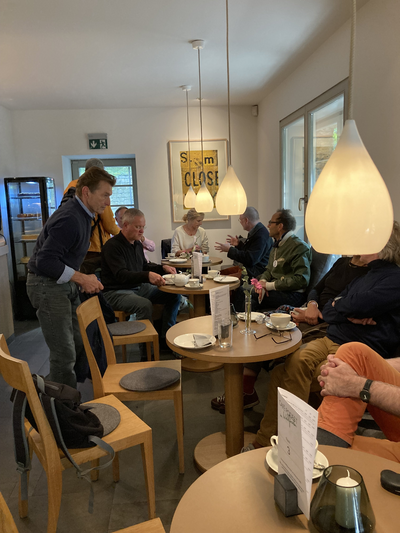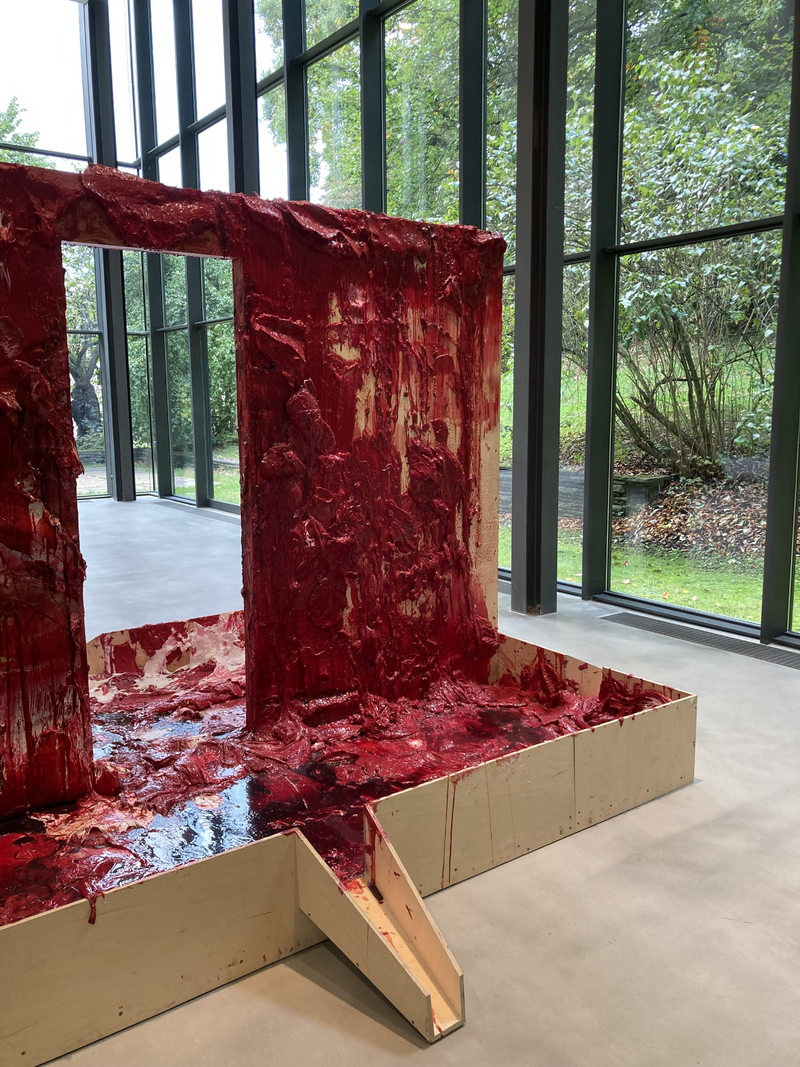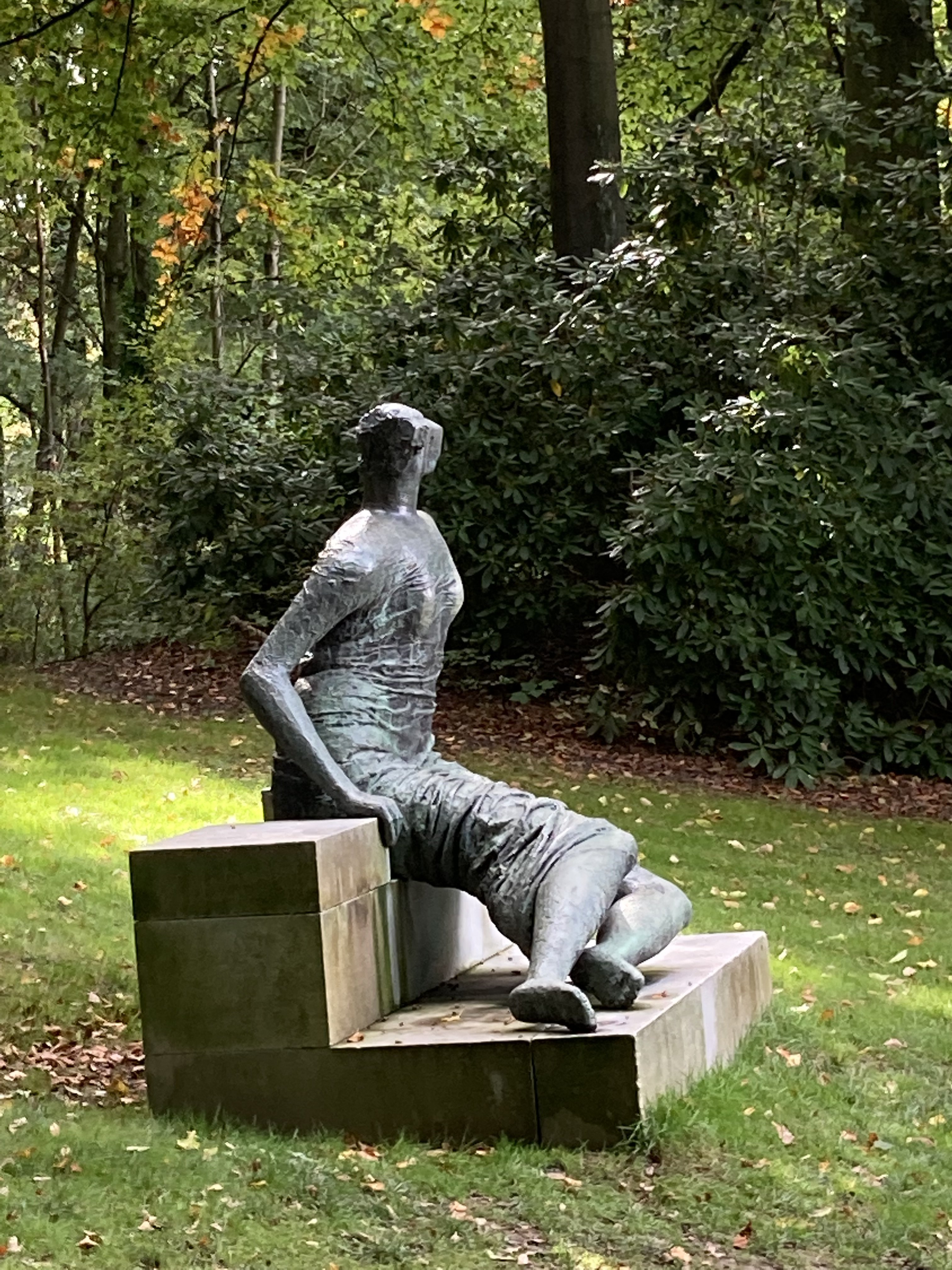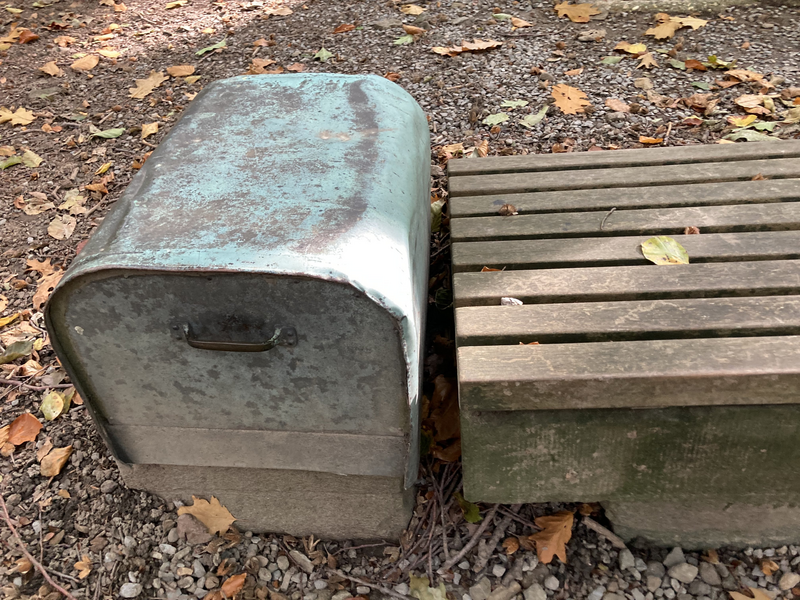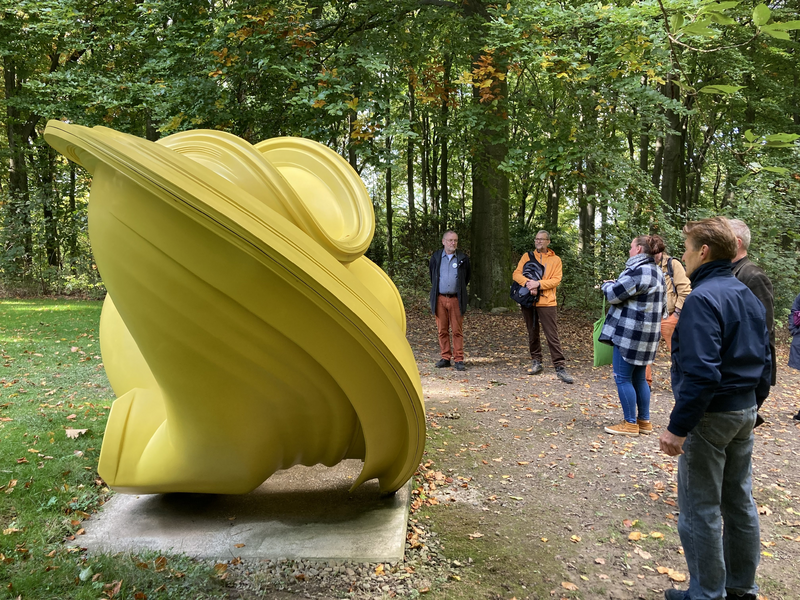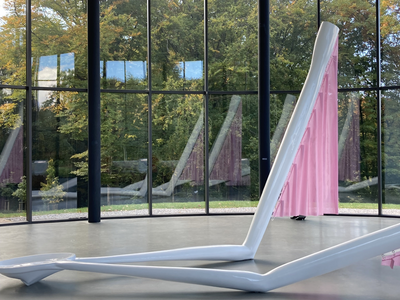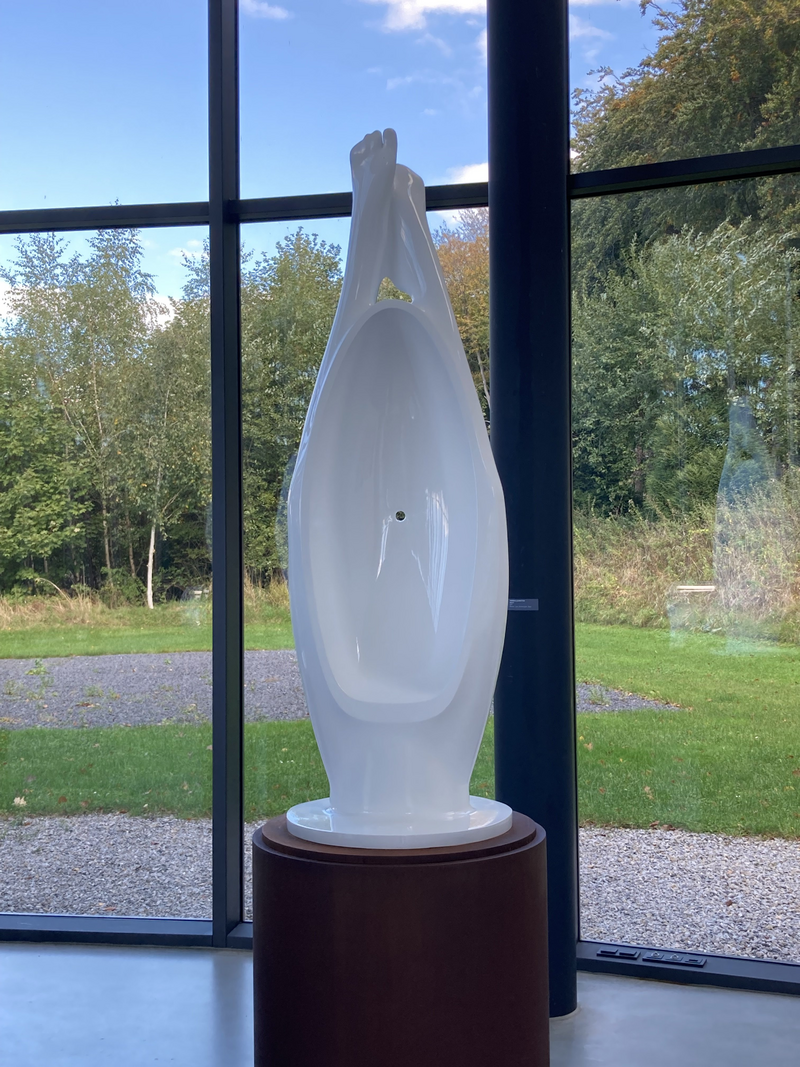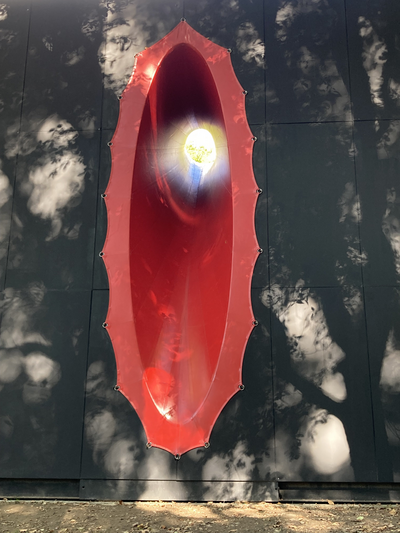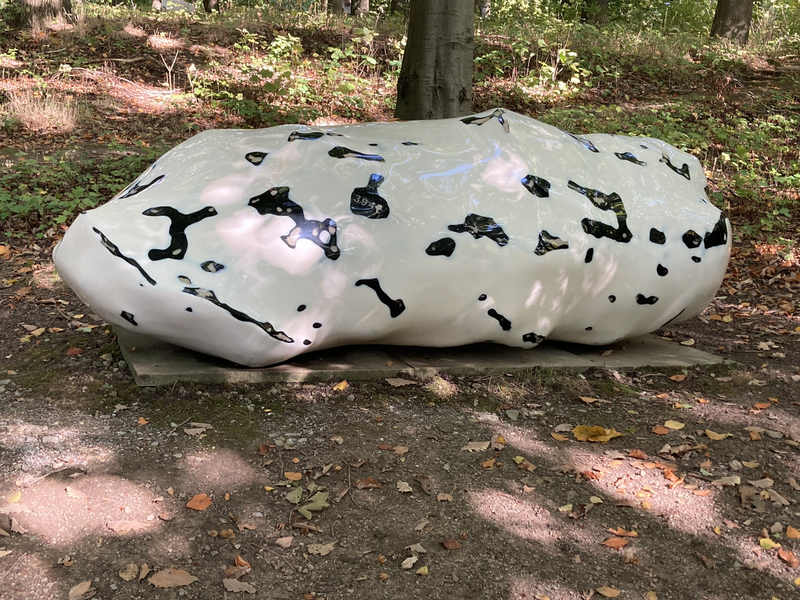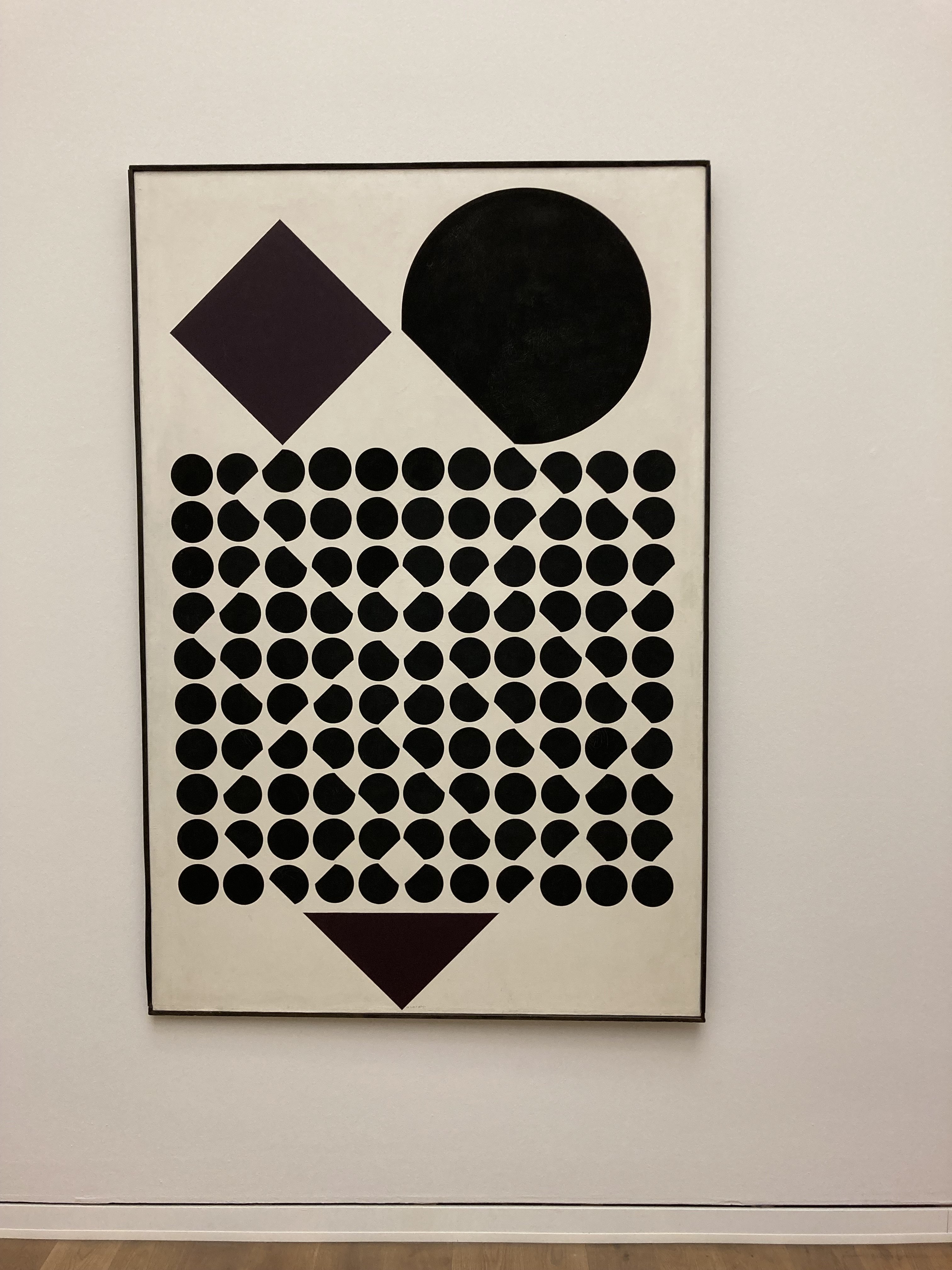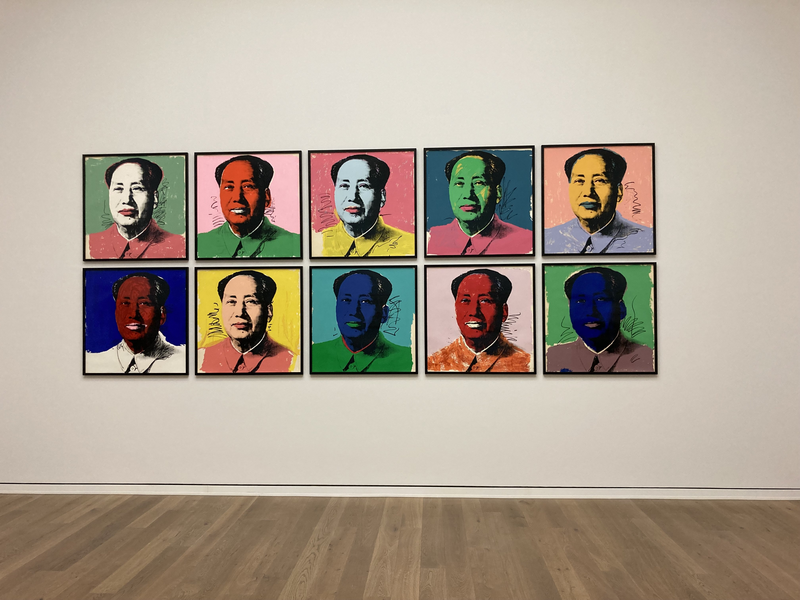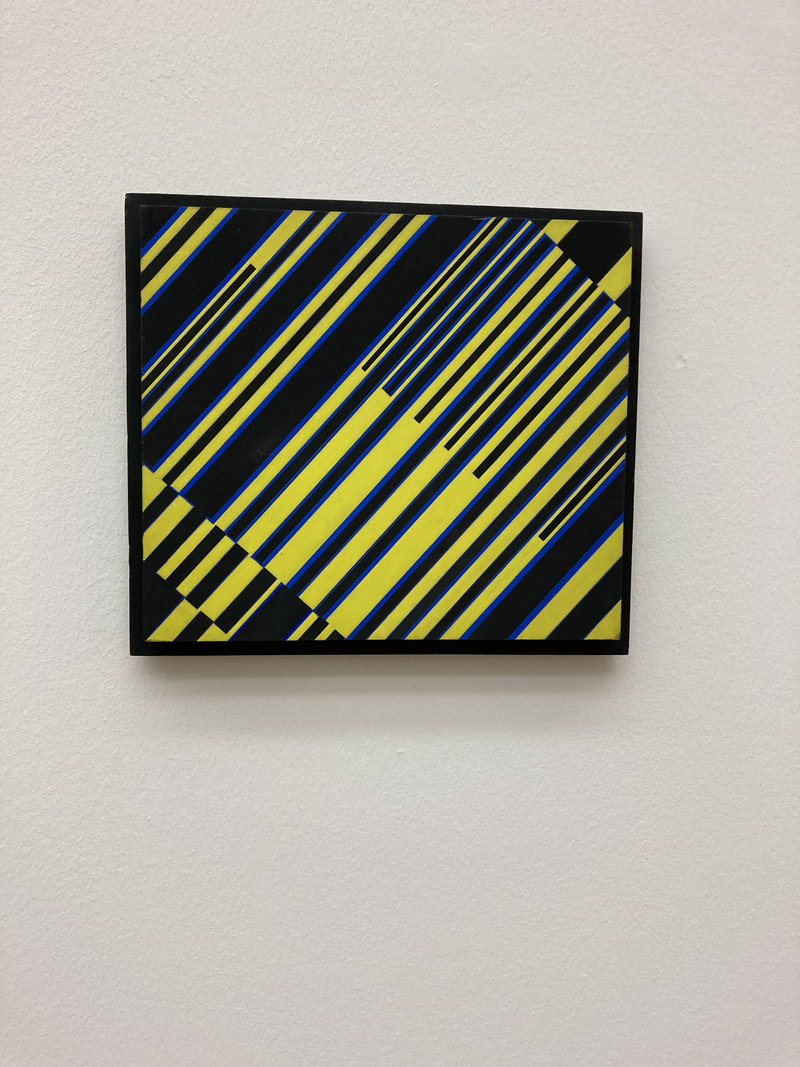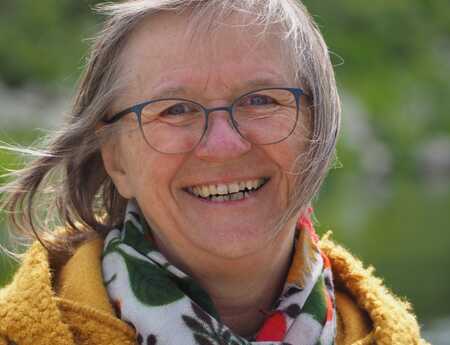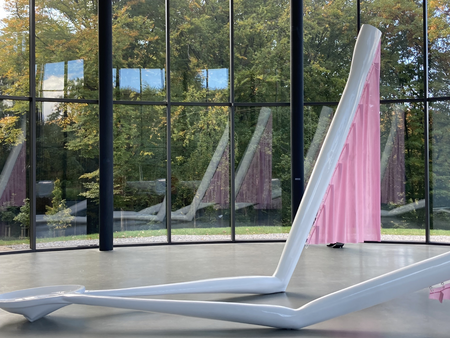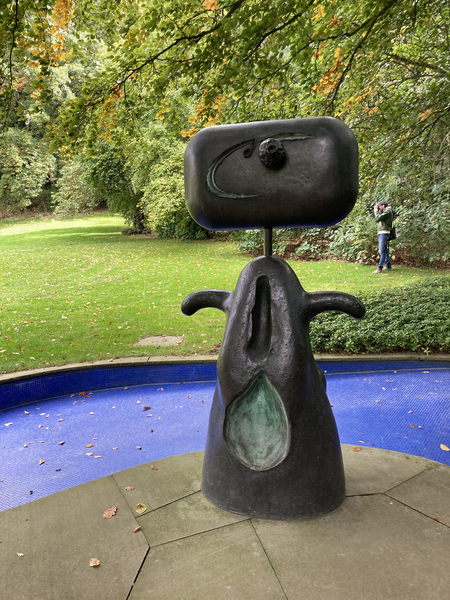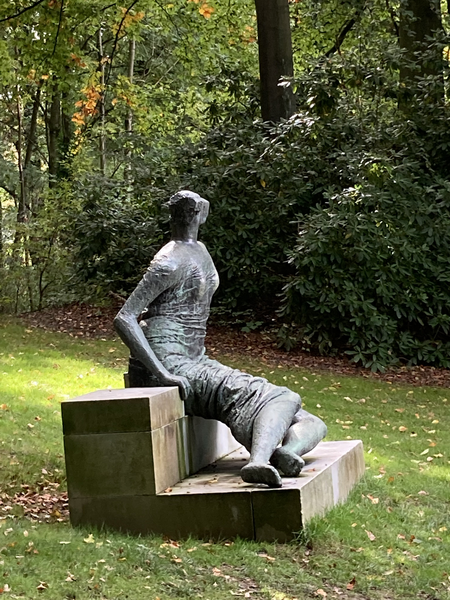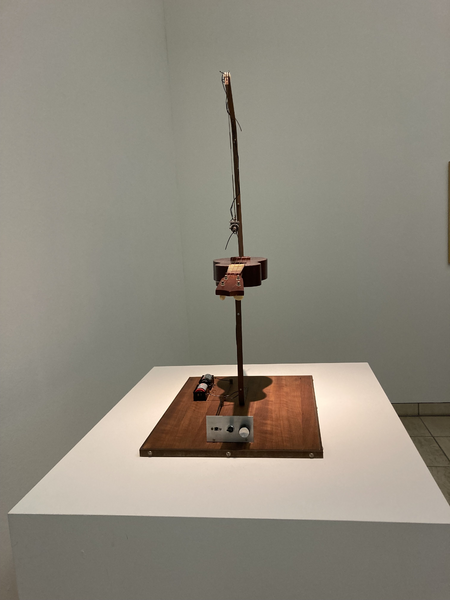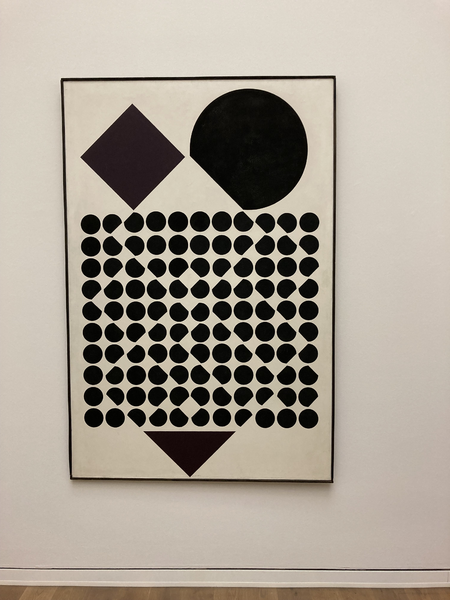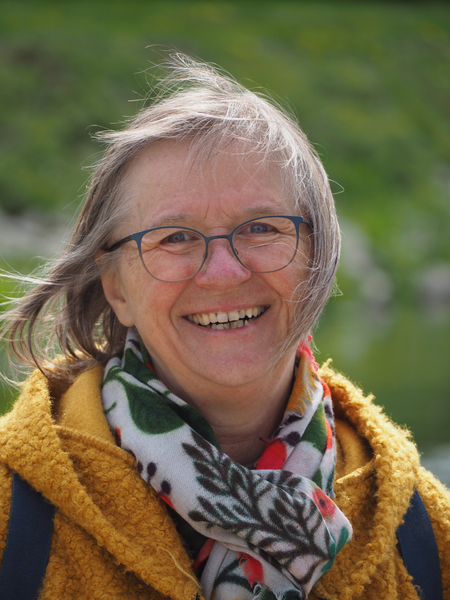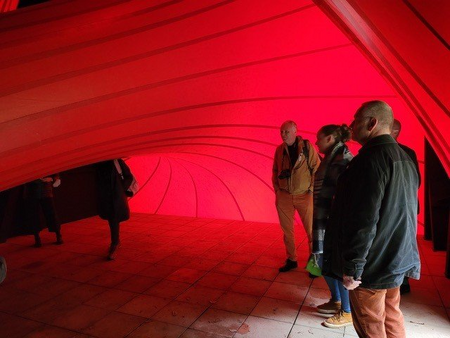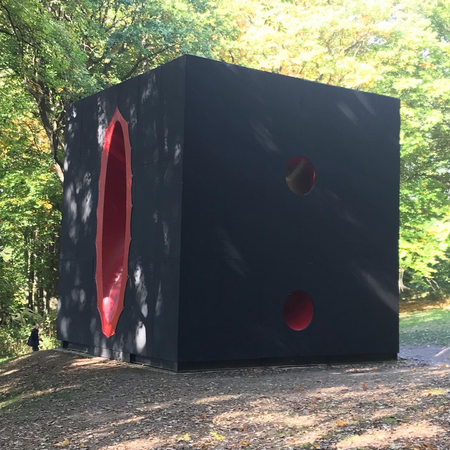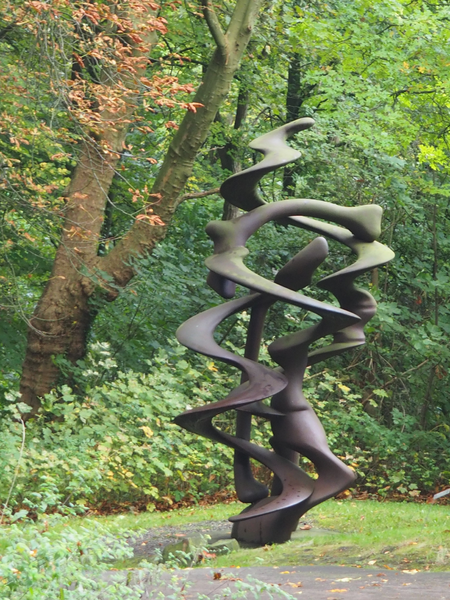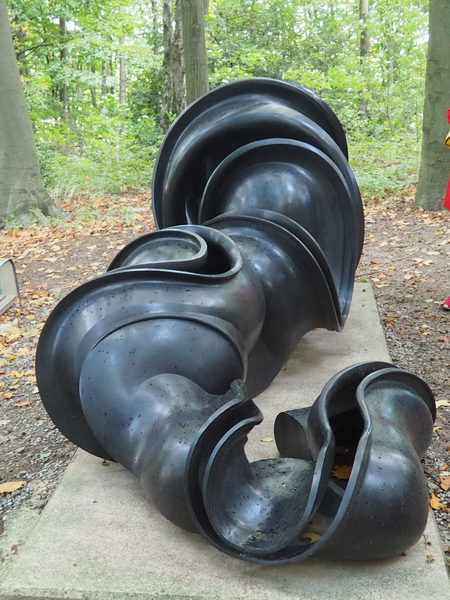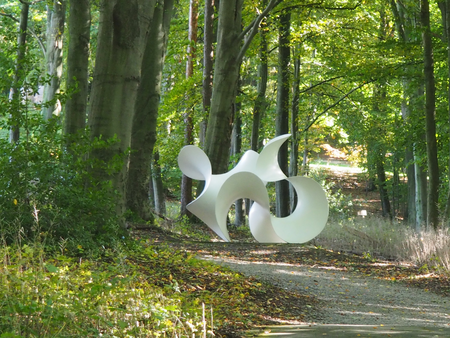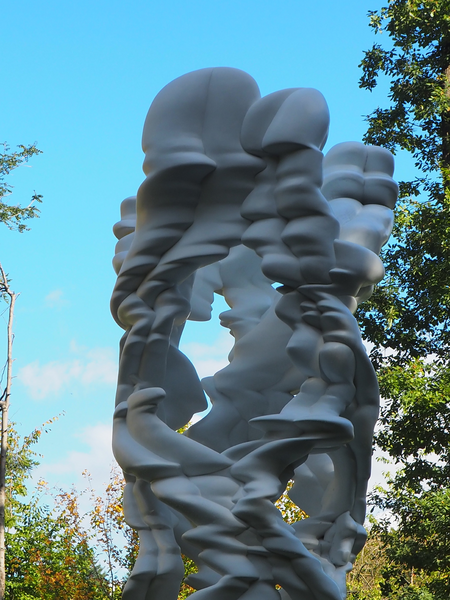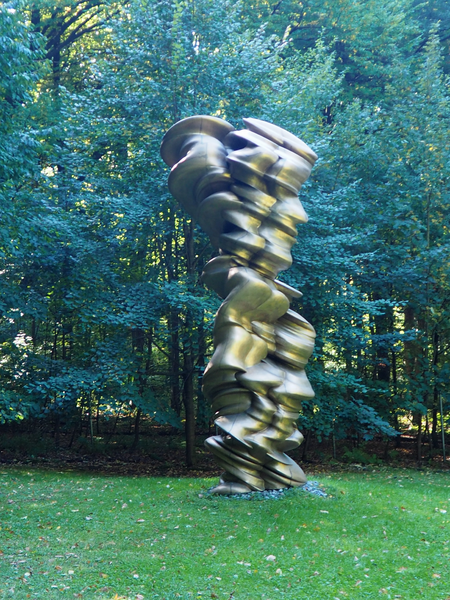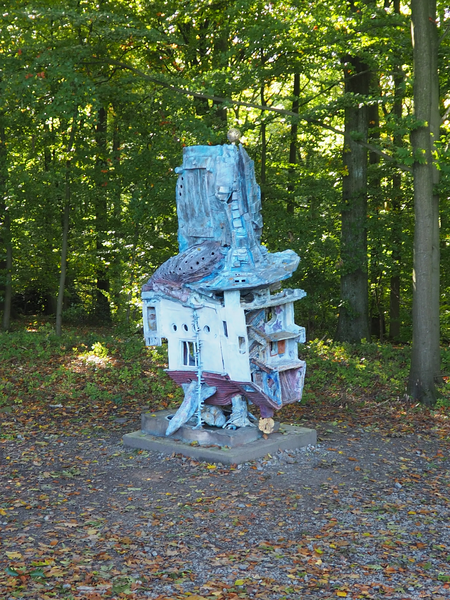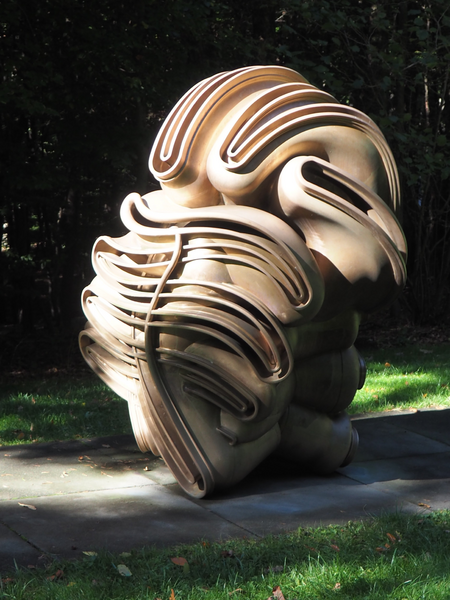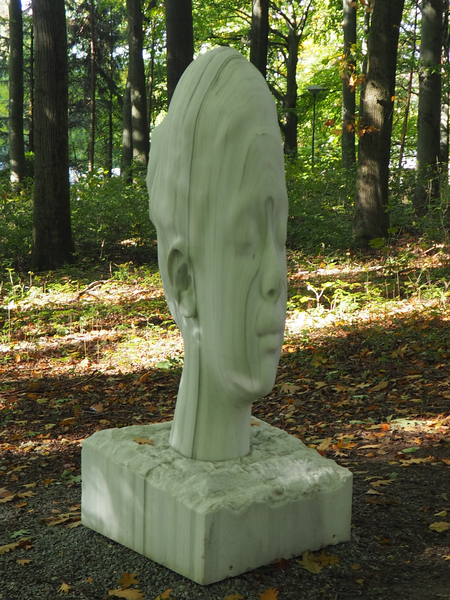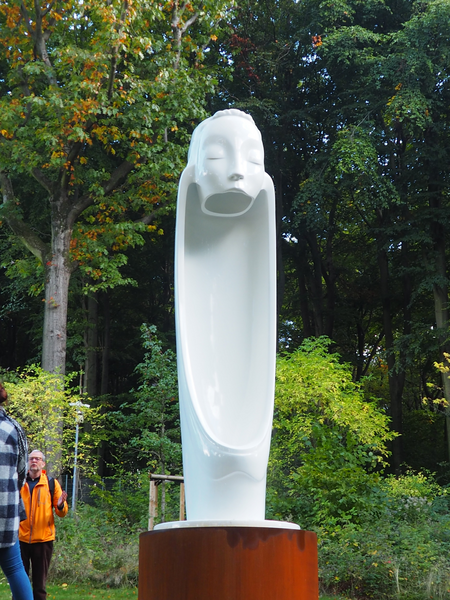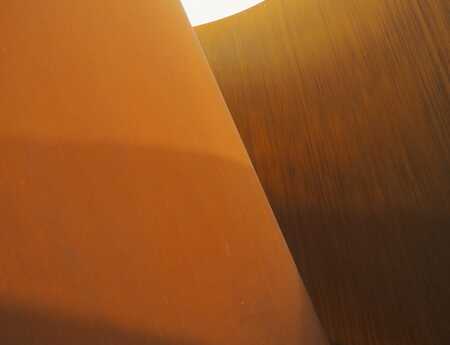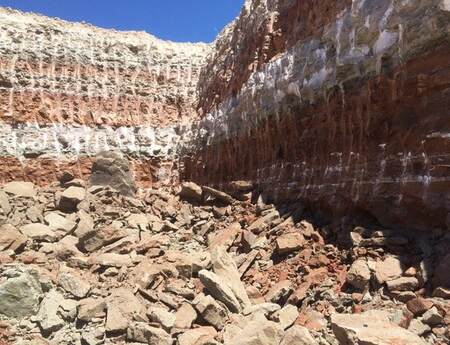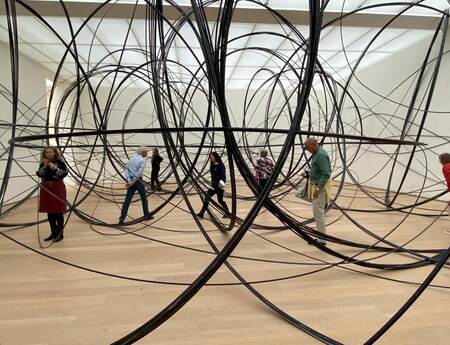International Dialogue in Wuppertal on 8 October 2022
Waldfrieden Sculpture Park and Von der Heydt Museum
It felt damp in autumn as we climbed from the car park to the meeting point, Café Podest.
The sun kept flashing through the canopy of tall trees. The still empty café quickly filled with lively exchanges until the sculptor and organiser of the Dialogue, Michael Zwingmann collected us and the guided tour began.
With her lively manner, the employee of the Von der Heydt Museum enthused us also about the unpleasant sculptures by Anish Kapoor in the first exhibition hall. Works like "Threshhold Door", which looked like the blood-covered site of a slaughter, were very challenging for me.
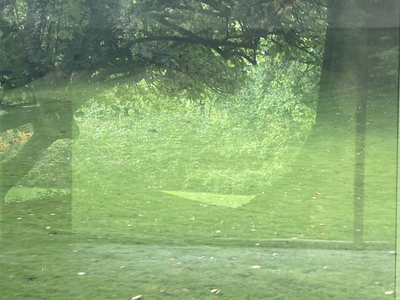
On the large lawn in front of the villa, our eyes could rest. There, Miro's bronze looked pleasing. The green was reflected in the panoramic windows that replaced the walls on the garden side. The inside was not separated from the outside. Over the light green of the grass, we climbed up the slope, passing a huge female bronze by Henry Moore. She casually took up the vast space. We quickly realised: the big names were gathered here!
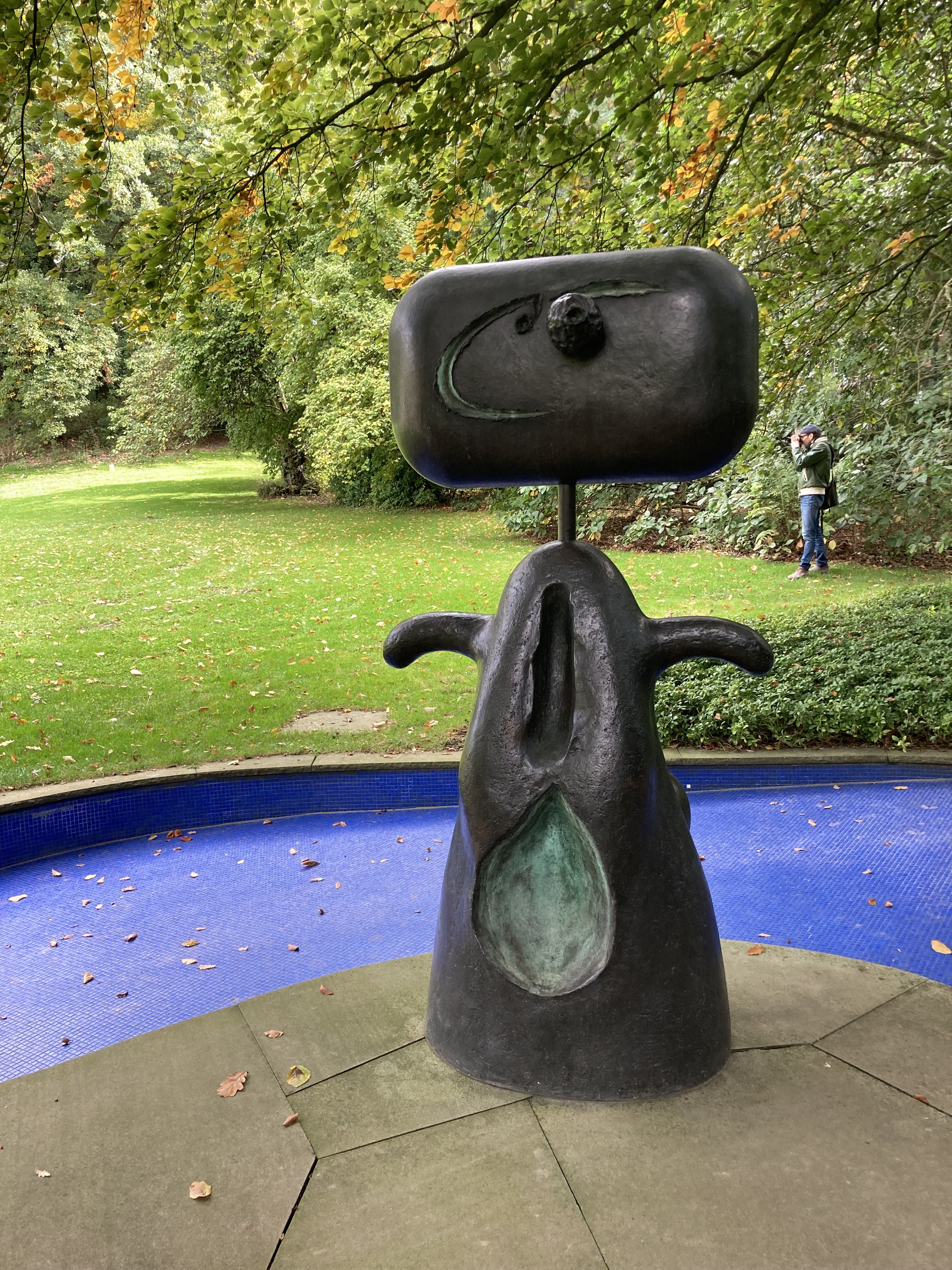
Left: "Femme" Joan Miró; Right: "Draped Seated Woman" Henry Moore
We also encountered curiosities along the way, such as the telephone box next to the bench, covered in verdigris. The former owner Ernst Herberts, a paint manufacturer, had once equipped the entire site with a telephone system. Always reachable, revolutionary at the time after the Second World War, normality today.
And of course Tony Cragg, who opened the estate as a sculpture park in 2008 and is constantly expanding it. Our guide impressively demonstrated how the artist created the sculpture "Declination" by alienating an everyday object, a yellow spray bottle.
For me, the upper exhibition hall was a building sculpture. Through the curved glass façade, my view went far into the greenery. Nature and the sculptures outside held a dialogue with the space and the sculptures inside.
The snow-white works by Andreas Schmitten fascinated and disturbed me at the same time.
And again, Anish Kapoor, who offered an impressive, disorienting spatial experience. The light, the trees, everything played into the staging. Being in this black cube, criss-crossed by tightly stretched red tarpaulins that formed vessels and connections, was for me the most powerful experience in the sculpture park. "Sectional Body preparing for Monadic Singularity" is what the artist called his sculpture. A possible translation would be: "sectional body preparing for monadic singularity". The title also opens up spaces.
On the way to the exit was "Trashstone 394" by Wilhelm Mundt. Inconspicuous at first glance, it nevertheless attracted my attention. Considering the story of how the Trashstones came into being, the mental cinema begins, for their core consists of objects from his studio that he no longer needs: Pieces of wood, scraps of tape, parts of discarded sculptures. Upcycling in the most beautiful sense!
Before we changed location, there was time for further discoveries, socialising in the café, depending on our mood.
At the Von der Heydt Museum, our familiar guide was already waiting for us. We were given an insight into the exhibition: "ZERO, Pop and Minimal - The 1960s and 1970s".
Sometimes, I was a little perplexed by the works of art, such as the "stand-up guitar" by Joe Jones, which made clattering noises with the help of an apparatus, or the "Fluxus piano" by Joe Jones, which produced motor-driven discordant sounds. Anything that smelled remotely of bourgeoisie was rejected and distorted by the artists.
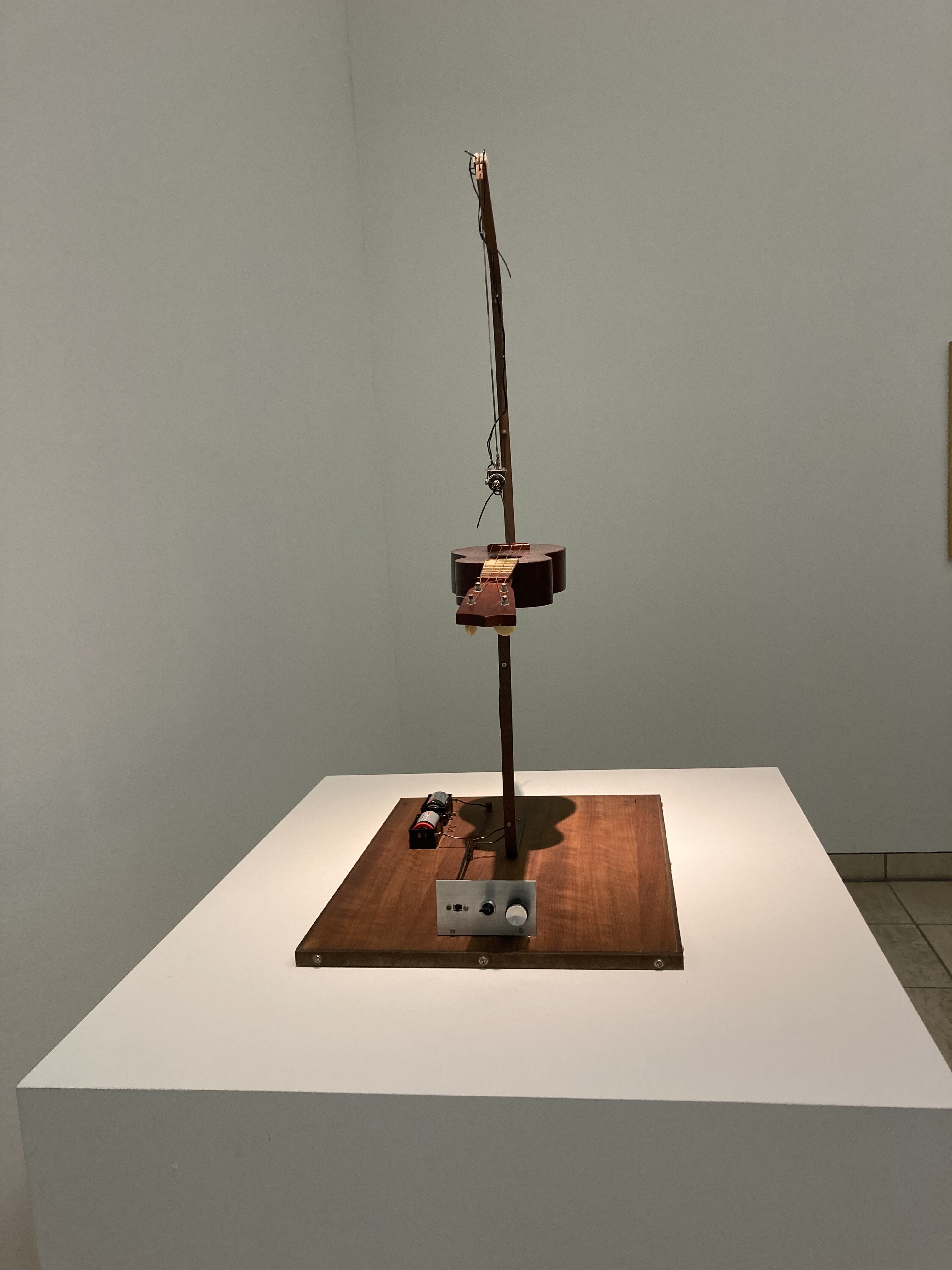
Left: "Standgitarre" Joe Jones; Right: "Kassiopaia" Victor Vasarely
Victor Vasarely's optical gimmicks made me wonder: what do I see and what is really there. How often is it not congruent.
On a large wall, Mao Zedong looked back at us ten times, a complete series of silkscreen prints, from each image in different colours a transformed Mao. An impressive work by Andy Warhol!
We were astonished to discover the pattern of the Aldi bag in a painting by Günter Fruhtrunk. A rejection of the aloof art business. Art ends up in the middle of everyday life.
After we had duly thanked our competent guide, there was still some time left for our own explorations until the museum closed. Part of the group ended the day together, with lively conversation and delicious Moroccan food in the restaurant "Abdels". How warmly we said goodbye to each other afterwards!
Translation: John Hamilton

